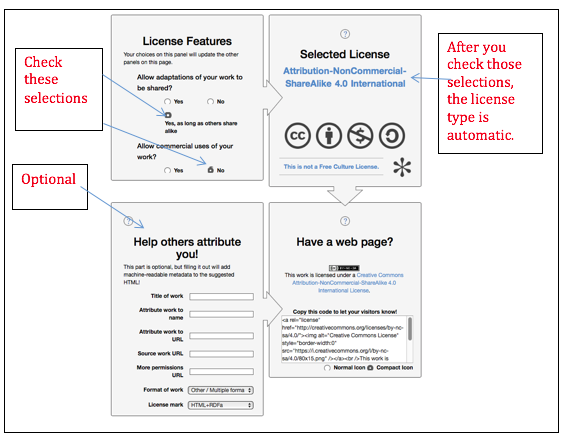According to Wikipedia.org, “A Creative Commons (CC) license is one of several public copyright licenses that enable the free distribution of an otherwise copyrighted work. A CC license is used when an author wants to give people the right to share, use, and build upon a work that they have created. CC provides an author with flexibility (for example, they might choose to allow only non-commercial uses of their own work) and protects the people who use or redistribute an author’s work from concerns of copyright infringement as long as they abide by the conditions that are specified in the license by which the author distributes the work. There are several types of CC licenses. The licenses differ by several combinations that condition the terms of distribution. They were initially released on December 16, 2002 by Creative Commons, a U.S. non-profit corporation founded in 2001.” (Wikipedia itself uses the CC BY-SA license for all of its content.)
All teaching materials submitted to the TSHS Teaching Resources Portal must contain a Creative Commons license. They are free and easy to obtain as shown below. We recommend the Attribution-NonCommercial-ShareAlike license (CC BY-NC-SA). According to CreativeCommons.org, “This license lets others remix, tweak, and build upon your work non-commercially, as long as they credit you and license their new creations under the identical terms.”
__1. Go to Creative Commons, https://creativecommons.org
__2. Click “Choose a License”

__3. Use the “license choosing tool” (shown here) to make your selection. The
following selection of license features is strongly recommended:

__4. Paste your Creative Commons license icon on the cover page and in the footer of
your teaching resource.
